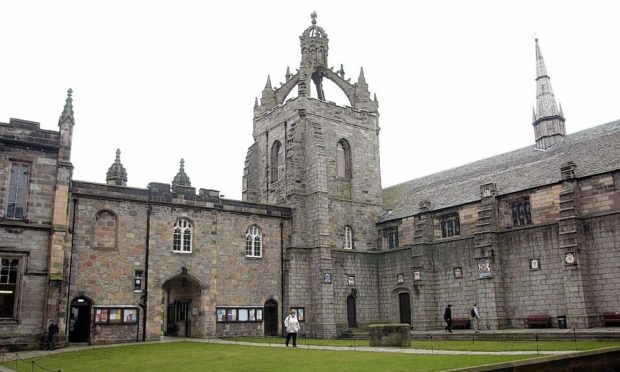What do you think of when someone tells you they are a psychologist?
Do you imagine a couch, a counsellor, inkblots, and the meaning of dreams? You might be surprised to know that psychology encompasses far more than the works of Freud and the area of psychoanalysis.
I am an Applied Psychologist at the University of Aberdeen and I work with a wide range of industries and occupations from pilots to pharmacists to farmers.
As the daughter of a nurse and a pilot it’s perhaps inevitable that I was drawn to the applied side of psychology – understanding risks, hazards and the actions of people on the ‘frontline’ in high risk industries. Through my collaboration with a range of industries I can gain real insight into how workers think, act and react to changes and issues in their line of work. By working together, sharing expertise, I can get a clear picture of what actually happens in the real world. In return, industry gains a deeper understanding of psychological approaches and can implement cutting edge research to enhance safety.
A key element of my current collaborative research is the investigation of safety critical skills. These skills, which can be both cognitive – such as decision-making and situation awareness – and social – namely leadership, teamwork and communication – are considered vitally important across a range of industries.
The story of these skills begins in aviation and the investigation of a series of aviation incidents in the 1960s and 70s. These inquiries found that the aircraft involved did not appear to have a technical flaw which led to the crash, rather it was the behaviour of the crew that seemed to be a major factor in what happened.
For example, in 1972 a passenger aircraft crashed into the Everglades, killing 98 people, when the crew became so focused on a malfunctioning landing light they failed to notice autopilot had been disengaged. That example, and many others like it, led to the development of training programmes known as ‘crew resource management’ which are designed to enhance and support the safety critical skills of the crew. This approach has certainly been effective in aviation, now considered one of the safest forms of transport. It has also been taken into other industries, such as healthcare, by Applied Psychologists like myself.
Continuing on this work of past psychologists, I turned my eye to the helicopter industry. Luckily for me two major helicopters companies in Aberdeen – Bristow and CHC – were interested in continuing to support research into greater understanding of safety critical skills in an industry that has become increasingly automated, complex and diverse.
The project with Bristow aims to understand the impact of mission focus on the utilisation of safety critical skills. Simply put, do search and rescue pilots use the same skills, in the same way, as offshore transport pilots? Or, do each group of pilots have a unique focus based on the requirements of their flight mission?
This research has a practical purpose for the company as the more we know about how these skills are used, the more tailored the training provided by the company can become.
The project with CHC aims to understand the factors, such as culture, that might influence the effectiveness of crew resource management training. That project has just begun, but has the scope to have some practical effects on crew resource management training provision in the future.
The other industry I focus on is agriculture which is currently listed as the most hazardous occupation in the UK – based on a recorded 39 fatalities reported by the Health and Safety Executive during 2018/19.
Unlike healthcare, aviation and other high risk industries, farming does not have a dedicated safety critical skills training programme, partly because of the unique nature of the industry – most farms are managed by a family or a single individual, as opposed to being part of a larger company.
My work in this area concentrates on assessing farmer safety critical skills, plus raising awareness and providing information on these skills to farmers. To that end I have been supported by a range of organisations including Teagasc (Agriculture and Food Development Authority, Ireland), the Farm Safety Foundation, NFU (National farmers Union) and IOSH (Institute of Occupational Safety and Health). Each have provided me with insight into the nature of farming as an occupation, they have shared my research findings and educational materials and have generally raised awareness of the project with farmers in the UK and beyond.
Forging connections with industry is a vital element of the work that I do. Without these connections I wouldn’t be able to turn theory into practice, or see my research being used to implement real change in the world outside my lab.
Dr Amy Irwin, Applied Psychologist, Aberdeen University

